Transitional kindergarteners are Minisink Valley’s youngest students; many are still only 4-years-old!
Like all transitional kindergarten work, the goal is to make learning as fun as possible so they’re best prepared for next year’s kindergarten experience.
As an example, Marjori Bobish’s Elementary School kindergarteners recently and successfully tackled an important lesson: Learning about the letter “Mm.”
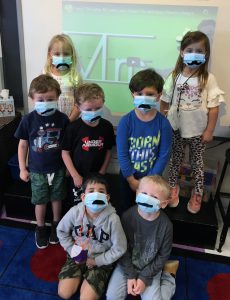
“Mm” is for mustaches: Who doesn’t know someone with a mustache?
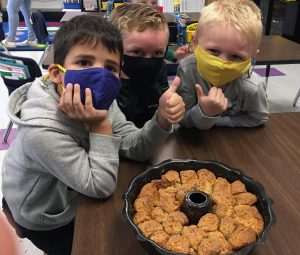
“Mm” is for “Monkey Bread: Who hasn’t baked something with a loved one at home?
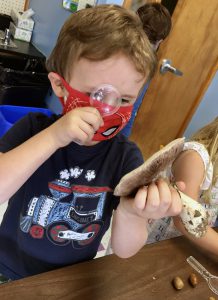
“Mm” is for mushrooms: Who hasn’t seen one in the yard…or even in soup?
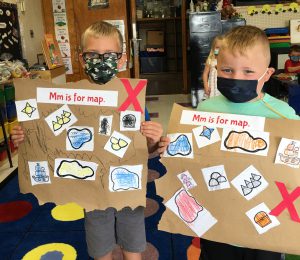
“Mm” is for treasure maps: Students are learning what the function of a map is and the basics of how to read a map.
“Mm” is for magnet: Students love to use magnets in class to see what kinds or objects are magnetic!
“Mm” is for mummies: A classic Halloween character!
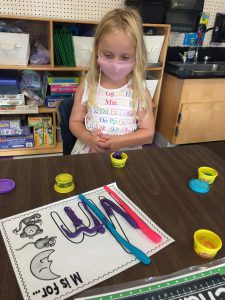 Students also used blocks and Play-Doh to form letters, all with a purpose beyond recognizing and understanding about the letter “Mm.”
Students also used blocks and Play-Doh to form letters, all with a purpose beyond recognizing and understanding about the letter “Mm.”
“These tools help to develop the muscle strength in these little one’s hands” Mrs. Bobish said. “More strength means control for writing as well as better stamina.”
All Minisink Valley, faculty look for create ways to incorporate multiple subjects into lessons. To illustrate this, Mrs. Bobish introduced basic geography through a discussion of students’ treasure maps, because map reading is the process of looking at the map to determine what is depicted and identifying the features portrayed and the symbols and labels used.
Or, there can be science (or other subject matter ) connections.
“We also measured and mixed ingredients for monkey bread right in the classroom, which we then sampled for snack,” she added. They used a magnifying glass to investigate mushrooms that we found in the courtyard on the school grounds. We then discussed what we observed. It’s important to find connections to the real world that our little students find relatable.”
